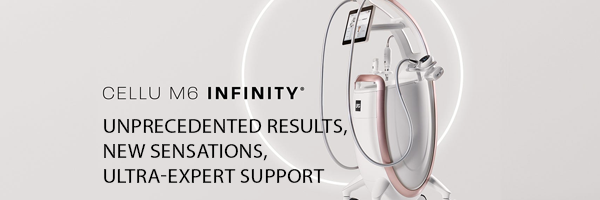
The Personal Touch
Piroska Cavell on why personalisation should be the cornerstone of all medicine
Personalisation is something I believe should form the key component of all branches of medicine – whether that’s formal clinical care, lifestyle interventions, or aesthetics. It has always seemed nonsensical to me that generic treatment pathways are still widely applied when every human body is biologically, emotionally, and genetically unique.
How does this relate to aesthetics and lifestyle medicine?
We often speak of the fusion of science and artistry in aesthetic practice. Great outcomes hinge on anatomical precision and an appreciation of each individual’s distinct structure, needs, and goals. And yet, all too often, practitioners are trained using ‘standard’ patterns of treatment – standard doses, standard injection points, and standard protocols. For less experienced clinicians, this can lead to disappointing outcomes and frustrated patients.
Worse still, some business models actively encourage this cookie-cutter approach, prioritising volume and profitability over quality and ethics.
I would argue this undermines best practice and erodes trust, especially in a field where the practitioner’s reputation is everything.
In contrast, personalised aesthetic treatment unlocks both better results and deeper patient satisfaction. Consider:
- Injectables: Muscle movement, facial symmetry, skin thickness, and age-related changes differ from person to person. A templated approach to Botox or fillers often yields unnatural results, while tailored techniques create balance, subtlety, and harmony.
- Skincare regimens: Personalised plans using medical-grade skincare take into account the patient’s skin type, history, sensitivities, and goals, rather than promoting a one-size-fits-all ‘kit.’
- Ethnic and cultural considerations: For instance, darker skin tones need special consideration with lasers or resurfacing to avoid hyperpigmentation – nuance a generic protocol won’t catch.
Personalisation is not about complexity for complexity’s sake, it’s about precision, intention, and care. In lifestyle medicine, the stakes are even higher.
Many practitioners are now integrating lifestyle medicine into their offering – particularly in areas like weight management, hormone balancing, and metabolic health. Here, personalisation is not just preferable, it’s essential. To ignore an individual’s unique physiology, environment, and mindset is to risk not just ineffective care but potential harm.
Examples abound:
- Weight loss: What works for one person – say, intermittent fasting – might be detrimental for another with adrenal fatigue or a history of disordered eating.
- Hormonal care: Women in perimenopause, for example, may have wildly different symptoms, lab results, and tolerances. Bioidentical hormone therapy must be nuanced, not protocol-driven.
- Nutritional strategies: A busy working parent may benefit from small, sustainable changes, whereas another person may be ready for a radical reset.
- Piroska Cavell on why personalisation should be the cornerstone of all medicine The cornerstone of lifestyle medicine requires deeply personalised support. There’s no generic prescription for motivation, mindset, or emotional barriers.
The limits of protocols in formal medicine
Of course, within mainstream medicine, there must be guidelines, and yes, there are budgetary and systemic constraints. But somewhere along the way, we lost the skill – and the permission, to listen. Too often, test results that fall ‘within the normal range’ are used to dismiss patients who feel persistently unwell. Their interoception – their own internal radar – tells them something is wrong, but they’re asked to ignore it.
As a former midwife, I honed the art of truly listening to patients. Midwifery teaches you that signs of change, distress, or danger don’t always conform to textbook presentations. Pregnant people often know something’s happening long before objective signs appear. That same listening, validating, and responsive approach should extend across all disciplines.
“Being seen”: The healing power of individualised care
Patients thrive when they feel seen, heard, and understood. At Sese, we believe passionately that consultations cannot be rushed, and treatment planning cannot be templated.
Creating a plan for someone’s skin, health, or body involves layers of assessment – medical, emotional, hormonal, environmental. Taking that time reinforces to the patient that we see them, not just a symptom or aesthetic goal.
Working in the private sector gives us powerful tools – access to compounding pharmacies, integrative testing, and a broad range of treatment modalities. We can personalise skincare, supplementation, hormones, nutrition, and more. And yes, with this comes responsibility. But with the right training and support, that responsibility is a privilege.
The opportunity is here. The tools are here. And the evidence overwhelmingly supports it.
Personalised care is ethical, effective and essential.
I passionately believe our patients deserve nothing less. Personalisation isn’t a luxury add-on; it is the gold standard. Personalised care leads to better outcomes, trust, and deeper healing, whether in aesthetics, lifestyle medicine, or mainstream healthcare.
Let’s move away from standardised, impersonal protocols towards the norm of working with human complexity is meeting it with human-centred care.
